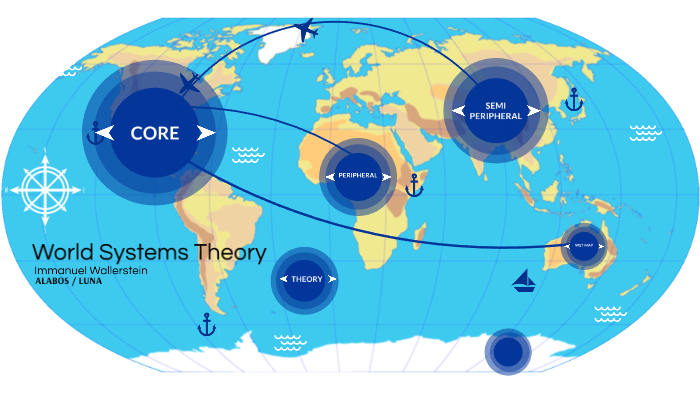Crisis of the Modern World-System
4. Crisis of the Modern World-System
Question: What are the key factors contributing to the crisis of the modern world-system, as described by Wallerstein? How do bifurcation, chaos, and choices shape the future of global capitalism?
Relevant Readings: Wallerstein, Chapter 5 of World-Systems Analysis; Frank Elwell, “Wallerstein’s Crisis of Capitalism”; Christopher Chase-Dunn, “Five Linked Crises in the Contemporary World System.”
Immanuel Wallerstein’s analysis of the modern world-system reveals a complex interplay of economic, social, and political factors that contribute to its ongoing crisis. In his work, particularly in Chapter 5 of *World-Systems Analysis*, Wallerstein identifies several key elements that characterize this crisis, including bifurcation, chaos, and the choices that societies face as they navigate these turbulent dynamics.
## Key Factors Contributing to the Crisis of the Modern World-System
### 1. **Structural Crisis**
Wallerstein posits that the modern world-system is experiencing a *structural crisis*, which he defines as a fundamental breakdown of the existing economic and political order. This crisis is not merely a cyclical downturn but a deep-seated transformation that challenges the very foundations of global capitalism. Key aspects include:
- **Economic Instability**: The capitalist economy has become increasingly unstable, marked by recurrent financial crises, rising inequality, and the inability to sustain growth. This instability is exacerbated by the interdependence of global markets, where economic shocks in one region can have widespread repercussions.
- **Environmental Challenges**: The capitalist system's relentless pursuit of growth has led to significant environmental degradation, contributing to climate change and resource depletion. These ecological crises pose existential threats to both human societies and the planet.
### 2. **Bifurcation**
Wallerstein introduces the concept of *bifurcation* to describe the critical junctures at which societies must make significant choices about their futures. This bifurcation is characterized by:
- **Diverging Paths**: As the world-system faces crises, countries and regions are confronted with divergent paths. Some may choose to reinforce existing power structures and inequalities, while others may seek transformative changes that promote social justice and sustainability.
- **Polarization of Responses**: The choices made in response to the crisis can lead to polarization, where societies either embrace regressive policies that deepen inequalities or pursue progressive reforms aimed at addressing systemic issues. This polarization can manifest in political movements, social unrest, and ideological conflicts.
### 3. **Chaos**
Wallerstein describes the current state of the world-system as one of *chaos*, characterized by rapid and unpredictable fluctuations in various parameters, including economic conditions, political stability, and social cohesion. Key points include:
- **Loss of Equilibrium**: The traditional pressures that maintained equilibrium within the world-system have weakened. In a chaotic environment, small social movements can have outsized impacts, leading to significant political and social shifts, often referred to as the "butterfly effect."
- **Increased Uncertainty**: The chaotic nature of the current world-system creates uncertainty for individuals, communities, and nations. This uncertainty can lead to fear and anxiety, prompting reactions that may further destabilize the system.
## Choices Shaping the Future of Global Capitalism
### 1. **Progressive vs. Regressive Forces**
Wallerstein emphasizes that the future of global capitalism hinges on the choices made by various actors within the system. These choices can be categorized into two broad camps:
- **Progressive Forces**: These include movements advocating for social justice, environmental sustainability, and egalitarianism. Such forces seek to reshape the world-system in ways that prioritize human needs over profit, emphasizing cooperation and solidarity.
- **Regressive Forces**: In contrast, regressive forces aim to maintain or restore existing hierarchies and inequalities. This includes authoritarian regimes, nationalist movements, and corporate interests that resist change and seek to preserve the status quo.
### 2. **Potential for Systemic Change**
Wallerstein argues that the current crisis presents both dangers and opportunities. The choices made in response to the crisis can lead to:
- **Transformation of the World-System**: If progressive forces gain traction, it may lead to a reconfiguration of the world-system that prioritizes equity, sustainability, and democratic governance. This transformation could involve new economic models that challenge the dominance of capitalism.
- **Continuation of Inequality**: Conversely, if regressive forces prevail, the world may witness a consolidation of power among elites, leading to increased oppression and inequality. This scenario could result in heightened conflicts and social unrest as marginalized groups resist exploitation.
## Conclusion
Wallerstein’s analysis of the crisis of the modern world-system highlights the intricate interplay of structural factors, bifurcation, and chaos. The choices made by societies in response to these challenges will significantly shape the future of global capitalism. As the world navigates this crisis, the potential for both progressive transformation and regressive entrenchment remains, underscoring the critical importance of collective action and informed decision-making in determining the trajectory of the world-system.
Citations:
[1] https://www.journals.uchicago.edu/doi/abs/10.1086/226431
[2] https://jwsr.pitt.edu/ojs/jwsr/article/view/494
[3] https://longnow.org/ideas/understanding-the-modern-world-system-over-the-longue-duree/
[4] https://study.com/learn/lesson/world-systems-theory-wallerstein.html
[5] https://www.ucpress.edu/books/the-modern-world-system-i/paper
[6] https://jacobin.com/2023/12/immanuel-wallerstein-world-systems-theory-development-cycles-capitalism-crisis-history
[7] https://en.wikipedia.org/wiki/Immanuel_Wallerstein








